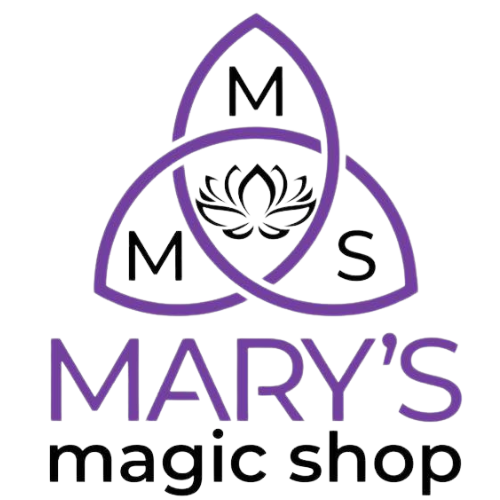
Beginner Witchcraft
Share
Beginner’s Guide to Witchcraft: How to Start Your Magical Journey
Witchcraft is an ancient practice that has been embraced by cultures around the world for centuries. Whether you’re drawn to its spiritual depth, its connection to nature, or its empowering rituals, witchcraft offers a unique path for self-discovery and transformation. If you’re new to witchcraft and wondering how to begin, this guide will walk you through the basics, from essential tools to ethical considerations and simple rituals to get you started.
What is Witchcraft?
Witchcraft is a practice that involves working with natural energies, intention, and often deities or spirits to create change in your life or the world around you. It’s not a one-size-fits-all practice—witchcraft can be deeply personal and tailored to your beliefs, whether you’re pagan, Wiccan, spiritual, or simply curious. At its core, witchcraft is about connecting with the elements, the cycles of nature, and your own inner power.
Step 1: Set Your Intentions
Before diving into rituals or spells, take time to reflect on why you’re drawn to witchcraft. What do you hope to achieve? Are you seeking spiritual growth, healing, or a deeper connection to nature? Setting clear intentions will guide your practice and help you stay focused.
Journal Prompt: Write down your reasons for exploring witchcraft. What do you hope to learn or experience?
Step 2: Learn the Basics of Witchcraft Ethics
Ethics are an important part of witchcraft. Many practitioners follow the Wiccan Rede, which states, “An it harm none, do what ye will.” This means you should strive to avoid causing harm to others or yourself through your actions. Another key principle is the Rule of Three, which suggests that whatever energy you put out into the world—positive or negative—will return to you threefold.
Key Ethical Considerations:
-
Always practice with respect for others’ free will.
-
Be mindful of the impact of your spells and rituals.
-
Take responsibility for your actions and their consequences.
Step 3: Gather Basic Tools
While witchcraft doesn’t require expensive tools, having a few basic items can help you focus your energy and create a sacred space. Here’s a starter list:
-
Athame (Ritual Knife): Used to direct energy, not for physical cutting.
-
Wand: A tool for channeling energy, often made of wood or crystal.
-
Cauldron: Symbolizes transformation and can be used for burning herbs or holding water.
-
Candles: Represent the element of fire and are used to set intentions.
-
Crystals: Each crystal has unique properties (e.g., amethyst for protection, rose quartz for love).
-
Herbs: Used in spells, teas, or incense for their magical properties.
-
Book of Shadows: A journal to record your spells, rituals, and reflections.
Tip: You don’t need to buy everything at once. Start with what resonates with you and build your toolkit over time.
Step 4: Create a Sacred Space
A sacred space is a dedicated area where you can perform rituals, meditate, or connect with your spiritual practice. This could be a small altar, a corner of your room, or even a spot in nature.
How to Set Up an Altar:
-
Choose a flat surface like a table or shelf.
-
Add items that represent the four elements: a candle (fire), a bowl of water (water), incense or feathers (air), and a crystal or plant (earth).
-
Include personal items like photos, symbols, or offerings to deities if you work with them.
Tip: Cleanse your space regularly with sage, palo santo, or sound to keep the energy clear.
Step 5: Learn About the Elements and Correspondences
Witchcraft often involves working with the four elements—earth, air, fire, and water—and their corresponding energies. Understanding these elements can help you design spells and rituals that align with your intentions.
Element Correspondences:
-
Earth: Stability, grounding, abundance.
-
Air: Communication, intellect, clarity.
-
Fire: Passion, transformation, courage.
-
Water: Emotions, intuition, healing.
Tip: Incorporate elements into your practice by using corresponding tools (e.g., a bowl of water for emotional healing or a candle for transformation).
Step 6: Start with Simple Rituals
Rituals are a powerful way to connect with your practice and set intentions. Here are two beginner-friendly rituals to try:
1. Candle Magic for Setting Intentions
-
Choose a candle in a color that matches your intention (e.g., green for abundance, pink for love).
-
Carve a word or symbol into the candle that represents your goal.
-
Light the candle and focus on your intention as it burns.
2. Full Moon Cleansing Ritual
-
Place your crystals, tarot cards, or other tools under the light of the full moon.
-
Write down what you want to release (e.g., negative habits or emotions) on a piece of paper.
-
Burn the paper (safely) or bury it in the earth as a symbolic act of letting go.
Step 7: Study and Practice Regularly
Witchcraft is a lifelong journey of learning and growth. Here are some ways to deepen your practice:
-
Read Books: Start with beginner-friendly titles like “Witchcraft Today” by Gerald Gardner or “The Green Witch” by Arin Murphy-Hiscock.
-
Join Communities: Connect with other witches online or in local groups to share knowledge and experiences.
-
Experiment: Try different types of witchcraft (e.g., green witchcraft, kitchen witchcraft, ceremonial magic) to see what resonates with you.
Final Thoughts
Starting your witchcraft journey can feel overwhelming at first, but remember that there’s no “right” way to practice. Trust your intuition, take things one step at a time, and most importantly, enjoy the process. Witchcraft is about empowerment, connection, and discovering the magic within yourself and the world around you.
Blessed be on your magical journey!
